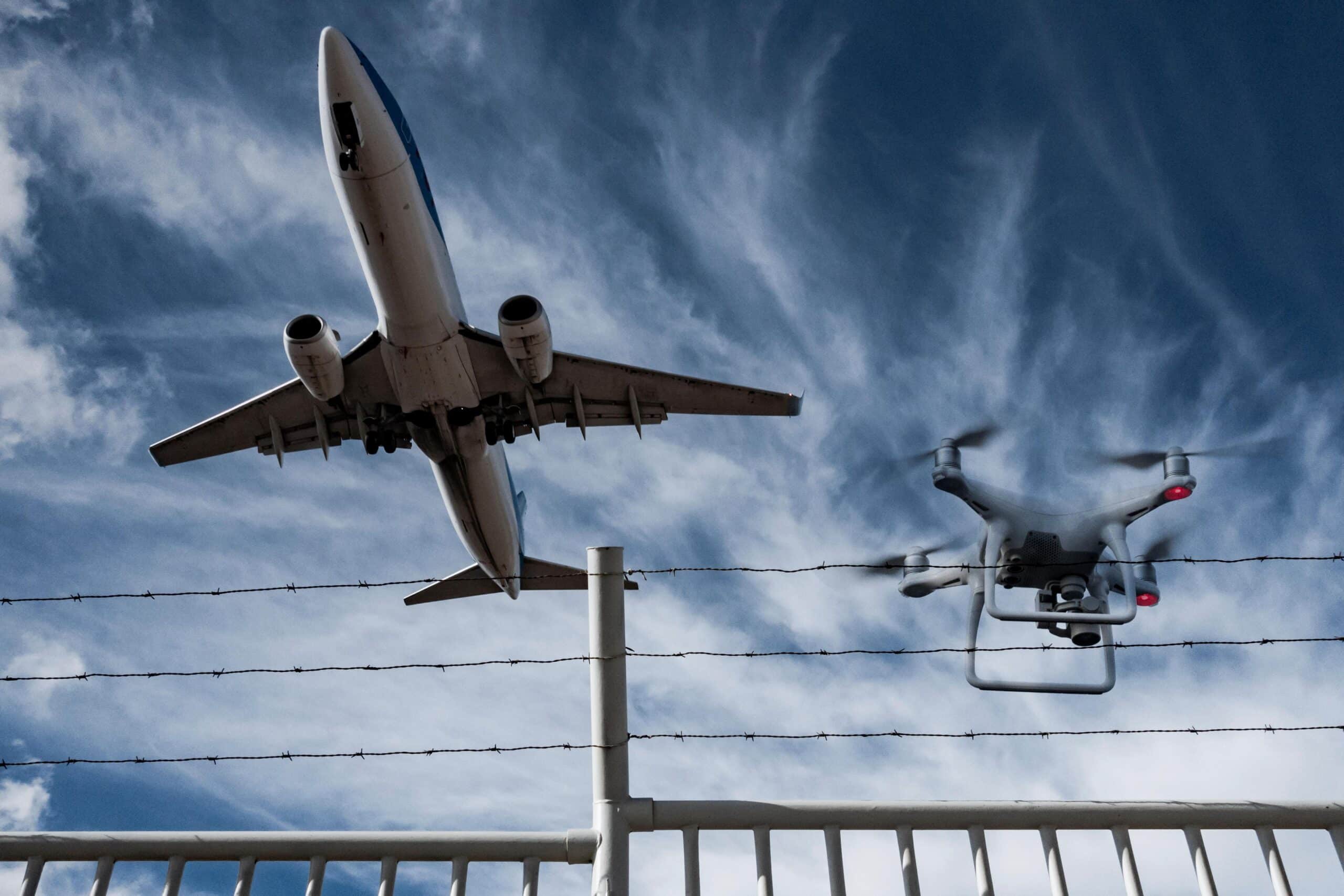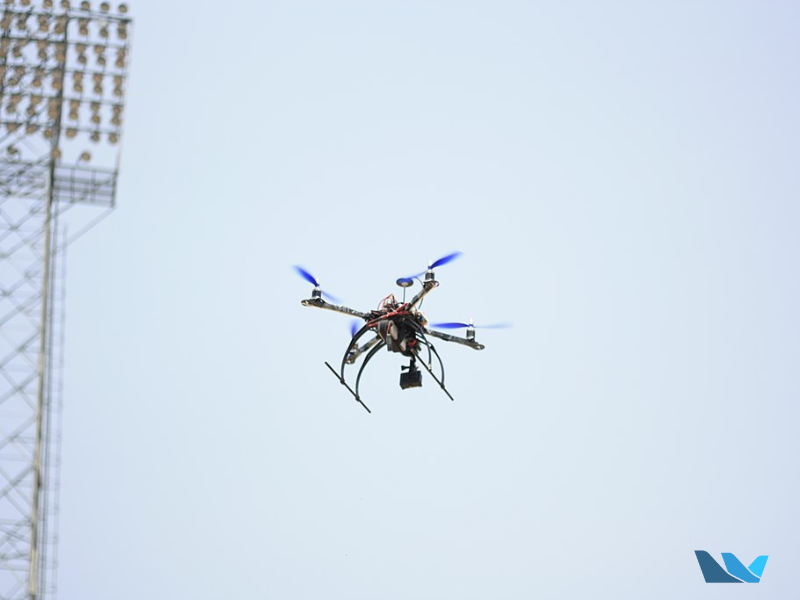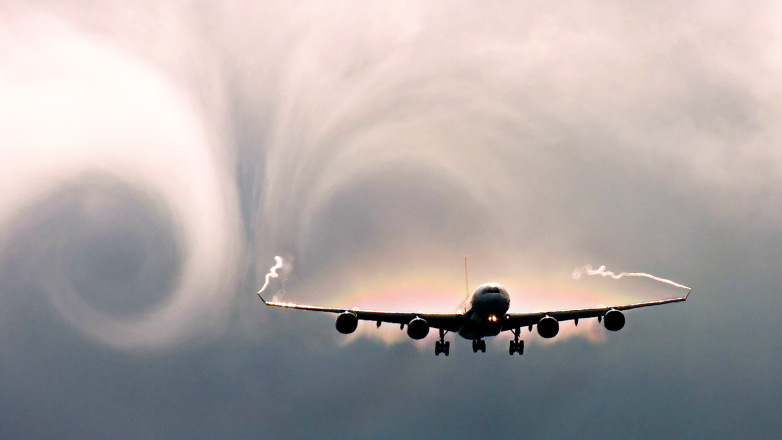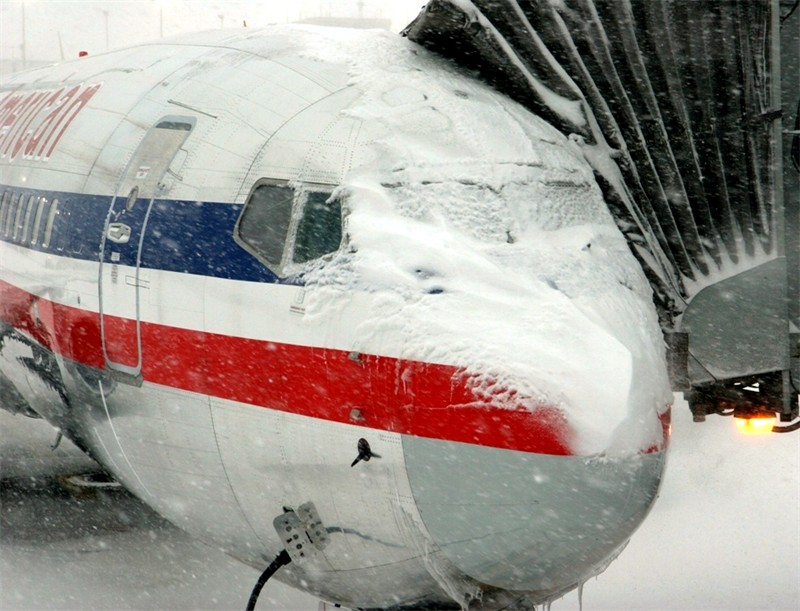Managing the Risks of Drones Near Airports: A Guide for Airport Staff
Our whole industry suffers when a drone is purposefully or maliciously used to cross an airport boundary fence. Or, worst of all, into the path of aircraft on approach or departure at the Airport. Even legitimate drones could be used as a result of cyberattacks. Therefore, it’s crucial for staff to understand the safety and security risks brought on by Drones near Airports.
Drone incursions have increased in frequency near aerodromes as a result of the increased use of unmanned aircraft (UA). Wherever you are reading this, I know you have seen a recent news report. If you are staff, then knowing the STAKEHOLDERS and their responsibilities will help your decision-making.
These occurrences severely disrupt operations of airlines and airports and have a significant effect on passengers. The Unauthorized use of drones has led to questions for regulators and aviation stakeholders about how to handle these situations and make sure laws are robust and applied quickly to bad actors.

There’s a lot of information out there on drones near airports – but precious little on stakeholders and what staff can do to prepare for what will be a regular occurrence. And while it is unlikely that you will be part of the reporting or investigating teams, it helps to understand these structures and practices.
What damage can a Drone do to a commercial aircraft?
There’s a study on the impact of drones colliding with planes by the Department for Transport, Military Aviation Authority and British Airline Pilots’ Association. QinetiQ and Natural Impacts conducted the study using collision testing and computer modelling. These stakeholders and QinetiQ wrote the report to summarize findings and discuss how recommendations might be used. The study determines critical data such as minimum collision speed that could cause critical damage to aircraft. Critical damage in this study refers to major structural damage or drone penetration into the cockpit.
According to the study, although commercial aircraft windscreens have high resistance, there’s still a potential for significant damage under specific impact conditions.
- The study concluded that realistic impact speeds did not result in critical damage from drone devices weighing 1.2 kg or less.
However…
- The study did find that at high impact speeds, the 4 kg class drones caused critical damage to aircraft windscreens.
Here are the key conclusions from the report:
- Birdstrikes are well understood, but the risks of drone collisions are only starting to be recognized in aviation. This study increases our knowledge.
- Drone collisions could seriously damage helicopter windscreens, as shown by the results. Helicopter tail rotors can be seriously damaged.
- This study found that commercial aircraft windscreens can be severely damaged by mid-air collisions with quadcopter and fixed-wing drone vehicles weighing 3.5 – 4 kilograms, even at low speeds (Drones can reach high speeds at 10,000 feet or above)
- Drone construction affects collision impact. When drone rotors were covered in plastic, collisions had less impact.
- Drones can cause more damage than birds of the same size and speed. Birdstrike certification does not guarantee complete protection from drones due to the hard metallic components they are constructed with.
Guidance for Airport Airspace - Stakeholders
If you take one thing from this page, its this. Get ready. Prepare yourself (or your staff) for the intrusion event. Have a plan that includes your immediate actions when you see a device, and how you are going to report it. And to whom!
We will give you some simple steps later on.
The Airport Manager at the center of it all – when it comes to actions and reactions – they are also the start of the custody chain. But the guidance is for a collaboration between all of the stakeholders, so that means understanding the roles and responsibilities of each one when an incursion happens.
This section outlines each stakeholder involved in an event where an unauthorized drone is near an aircraft, airport, or facility. Stakeholders vary by country, but their roles are what matter. Stakeholders’ involvement varies based on the event severity and phase – detection, response, recovery, or investigation. Also, how we respond to unauthorized drone events is determined by national threat levels and legal frameworks in each state, which dictate who is involved and to what extent. So let’s get to it.
Airport Manager Role
The aerodrome operator is responsible for ensuring the safety and security of the aerodrome infrastructure and operations, as well as all individuals and organizations utilizing its facilities. Unauthorized unmanned aircraft events in or near the aerodrome have a direct impact on the aerodrome operator. Therefore the Airport Manager plays a central role in managing incursions in collaboration with Air Traffic Control and other stakeholders.
The primary duties of the Airport Manager should consist of:
- Completing an initial assessment when an unauthorized UAS is reported or recovered;
- Coordinate with ATC throughout the event;
- Initiating the first response to manage the risk to aerodrome operations;
- activating the UAS Emergency Response Group (UERG) as needed;
- Monitoring the situation; and
- Unrolling measures to recover operations after the event has been contained.
National Aviation Authority (NAA, FAA) Role
The NAA creates and enforces aviation rules based on the ICAO Chicago Convention and its Annexes, with exceptions if differences are filed. Regulators should be involved in planning and investigating unauthorized UA. Aviation Authorities in certain areas are responsible for detecting, identifying, and responding before the Airport Manager. This will help improve local procedures for dealing with unauthorized UA by assessing lessons learned and enhancing risk assessment methods.
Regulations should allow for collaborations with industry, ANSPs, and aerodrome operators to stay updated on technology and operational needs. Industry involvement is crucial for UA regulation development, allowing operators to take ownership of national regulations.
Aviation Security Role
Airports are usually in charge of aviation security. Sometimes, another entity is responsible for security (and certification) at the airport. Aviation security is evolving to change to deal with new threats from unauthorized drones, but domain expertise in technology is a challenge. AVSEC involvement in an unauthorized UA event will vary based on local procedures. When there’s an incursion, aviation security officers need to work with airport police and the Airport Manager to respond based on the severity level.
Air Traffic Control Role
ATCOs ensure safe and efficient flight management. This covers aircraft flying near the airfield and those on the ground. The ATCO’s actions during an event with a drone depends on local procedures. Controllers are responsible for observing and receiving information on reported incursions, providing traffic information to pilots, and communicating with relevant parties for safe flight operations. ATCOs will share information and coordinate responses for the Airport Manager to act upon.
The Pilot's Role
Pilots must avoid collision hazards and report any drone sightings to ATC when operating at an airport. The pilot will follow ATC instructions for landing or departing if an unauthorized drone is present. ATC can help the pilot by giving traffic info on unauthorized UA. Pilots might not be able to identify unauthorized aircraft. Pilots should give ATC as much info as possible about drone incursions. If an unauthorized drone is in the approach path of an aircraft – they will coordinate with air traffic control and receive vector guidance.
UAS Operator / UAS Pilot Role
A UAS operator (or remote pilot) who is recognized may receive authorization to operate near an aerodrome, possibly for infrastructure inspection purposes. If an authorized drone is hacked and the UAS operator or remote pilot loses control of the vehicle, the operator or remote pilot is required to promptly inform the Airport Manager, ATC and either Airport Police or Law enforcement. UAS operators or remote pilots may have access to a direct incident reporting number, depending on local procedures.
If a UAS Operator or remote pilot detects an unauthorized UAS through their own operations or “detect and avoid systems” or other available surveillance methods, they are responsible for reporting the detection to the same contacts.
UAS Manufacturer Role
UAS OEMs should design drones to prevent them from entering unauthorized airspace (Geofencing). They should also comply with State-mandated electronic identification and consider using geographically restrictive software in flight control systems. UAS manufacturers should consider aircraft design and markings to make it easily identifiable to others.
Unmanned Traffic Manager (UTM) Role
The Unmanned Traffic Management (UTM) service provider, if implemented, would aid in the identification and tracking of unmanned aircraft to promote safe and efficient management of airspace. A traffic provider can identify registered drones and determine if a known operator or remote pilot is facing a contingency situation. A UTM provider may report an unknown or unregistered drone if it picks one up. UTM may be offered as a separate set of services or as a component of ATM (Air Traffic Management), depending on the jurisdiction. In the future, traffic information will be exchanged between UTM and ATM, regardless of the architecture.
Law Enforcement Role
The Police may be involved in emergencies depending on the threat level and local procedures. Local law enforcement is important in investigating unauthorized drone events. These bad actors will be stopped by law enforcement on the ground, in coordination with the other stakeholders. Police enforce the drone laws and will determine how individuals or groups are approached.
Cyber / Intelligence Agency Role
Agencies are important for identification and investigation. Information can come from networks and intelligence gathered for various purposes. We need to create a connection between UAS Emergency Response Group (UERG) and intelligence community due to the sensitive information involved.
Intelligence and security agencies are permitted to carry out certain activities that are exempted based on the specific security function they are required to fulfill. Authorities can reference documents such as the Global Counterterrorism Forum’s “Berlin Memorandum on Good Practices for Countering Terrorist Use of Unmanned Aerial Systems” and the ICAO’s “Aviation Security Global Risk Context Statement” for additional guidelines.
Staff / Your Role
If an unmanned aircraft is spotted by individuals who are not involved in its operation, they should inform air traffic control or local authorities using the available contact numbers and provide as much accurate information as possible about the sighting, including the location, altitude, size, and other relevant details.
If you have a Visual Sighting please attempt to collect the following information:
- Location of the drone – including an estimate of the distance from the airport, aircraft, or critical infrastructure.
- What is it’s Altitude and Trajectory (heading)?.
- Is it Moving or Stationary?.
- What is the rough Size, Shape, Appearance (e.g. Small, Quadcopter, Camera Underneath, Colors, Lights etc.).
- Is it carrying a Payload or not?

LAANC Report (USA)
LAANC is an acronym that stands for Low Altitude Authorization and Notification Capability, which is a partnership between the Federal Aviation Administration and various industries. It provides direct support for the integration of Unmanned Aircraft Systems into the current airspace.
LAANC offers the following services:
- Individuals who operate drones are permitted access to controlled airspace that is at or below 400 feet.
- An understanding of the limitations of pilot airspace.
- Air traffic professionals have access to information regarding the location and timing of drone operations.
This drone Data Exchange facilitates the sharing of airspace data between the FAA and approved LAANC service providers. UAS Service Suppliers can also offer software applications, accessible on both desktop and mobile devices, that facilitate the use of LAANC capability.
LAANC streamlines the process of applying for and obtaining airspace authorizations through automation. Pilots can apply for airspace authorization through automated applications created by FAA Approved UAS Service Suppliers (USS). The FAA UAS Data Exchange verifies requests against various airspace data sources including UAS Facility Maps, Special Use Airspace data, Airports and Airspace Classes, as well as Temporary Flight Restrictions (TFRs) and Notices to Airmen (NOTAMs). Once granted approval, pilots can promptly obtain their authorization.
UAS Detection, Identification and Response Technologies
Determining your operational needs – but also Local Laws – dictate the technical criteria and technological parameters, depending on the systems used:
These design parameters include:
• Detection Range (m, km, miles)
• Scan Rate (Hz)
• Radio Frequencies or Frequency Bandwidth (Hz)
• Geolocation (Location Marker, Mapping)
• Image Resolution (pixels)
• Classification (based on Counter-UAS Signature, aggregated data)
Uncontrolled Airspace Detection Technologies:
Radar –
Radar can detect threats from unmanned aircraft with all-weather and day/night capabilities. It can also detect any size of aircraft by analyzing the radar signature created when the aircraft meets RF pulses from the radar system. Scans can detect multiple objects at once, but needs to scan large areas quickly, eliminate false alarms, and distinguish between airborne and ground targets. Algorithms with machine learning are used to differentiate drones from other things such as birds. It can locate objects and distinguish between still and moving targets, but slow-moving or vertically-moving objects may be harder to detect.
Radio Frequencies –
RF is a popular way to detect drones in any weather or lighting conditions. Scanners can detect and identify a UAS within a range of 1-3 km. Detection scanners can find and locate devices emitting RF signals, giving a rough location of the user and operator. Algorithms can tell if a drone is authorized or not. These systems can detect drone transmissions by scanning the electromagnetic spectrum and can detect a signal from a transmitting drone. However an uncooperative drone won’t emit signals. RF-based drone detection sensors have limitations in detecting airborne objects due to potential interference, especially line of sight obstacles that can affect accuracy.
Drones near Airports
Optical/Infrared –
Optical and infrared detection systems are not common. Their sensors can detect using infrared, thermal imaging, or daylight cameras. Visual signatures detect drones in electro-optical sensors, while heat signatures are used in infrared sensors. Optical sensors capture visuals of the drone and its payload, and can record images for forensic purposes. Using an optical system to detect a drone can be difficult due to limited range and field of vision, as well as weather conditions.
Acoustics –
Acoustic sensors can detect objects that make noise, including drone motors or rotors. These sensors are often used with other detection tools. Algorithms and noise libraries can help identify authorized and unauthorized drone types. The sensor needs to filter out noise and detect small drone signals but algorithms help. Acoustic sensors work day and night but can be affected by wind and other noises.
Counter-UAS Technologies
There are Two Types
- Kinetic interdiction – physical (nets, birds of prey, lasers)
- Non-Kinetic (virtual, Cyber take-downs, Jamming – You need to make sure your tool is also cyber-secure!)
Kinetic interdiction involves intercepting unmanned aircraft through physical methods. Various kinetic techniques are undergoing testing. However, there may be limitations to their use in densely populated areas due to the possibility of an unmanned aircraft crashing or activating a payload. Thorough review of local legal regulations is necessary when considering Counter-UAS technology and measures. Consideration should be given to the potential safety effects on other aircraft in the surrounding area. In certain scenarios, using a combination of interdiction elements can improve the chances of a successful interdiction.
Best Practices to Manage the Risks of UAS Near Airports
If an unauthorized drone event occurs, it must be reported to the regulator due to safety and security concerns. Local procedures should include reporting criteria and mechanisms for post-event situations, especially if the drone was intentionally used to endanger aviation safety, which is illegal. ICAO Annex 17 mandates that States report security information and unlawful interference.
Voluntary safety reporting systems at airports and regulator sites can gather additional safety data not captured by mandatory reporting. Data from reporting can help identify trends and prevent future risks. This is essential for improving procedures to respond to unauthorized drones. Reporting of events must follow the same rules for protecting data and information as safety data collection in Annex 19.
Commercial Drones Near Airport FAQs
1. Will some of these drone countermeasures have an impact on aircraft or the systems of airports?
Answer : Let’s stick with the non-kinetic which poses less risk than physical capture technology. So we are mindful of the laws – Agencies – intertwining of tech – Telecoms – Cyber agencies – Manufacturer of tech – contract allows for access – must be agreed with the NAA – roles and responsibilities.
2. Who investigates a drone event ?
It’s a NAA (National Aviation Authority) led agreement – The Airport Manager is the first instance of event and response – this will normally then transition to the agreed Investigator – this can vary from region to region. It could be police, DOT, NAA. It can change.
3. Reporting incidents – how do I do it and to whom?
Start with your own Supervisor or Manager or go direct to the Airport Manager – Or Airport Police – Or Law Enforcement – Or Aviation Authority. Or all of them. There’s also an IATA reporting panel that can really use your data to learn.
4. What is “Full Containment” when it comes to drone capture?
It means when the drone incident is shut-down, there will be no reoccurrence. Maybe there is more than one drone, so you need to ensure there’s no chance they will reactivate, by identifying the operator of the drone and you can proceed to investigation.
5. Where are these laws coming from ?
ICAO. And you can go to their UAS page for more information.








